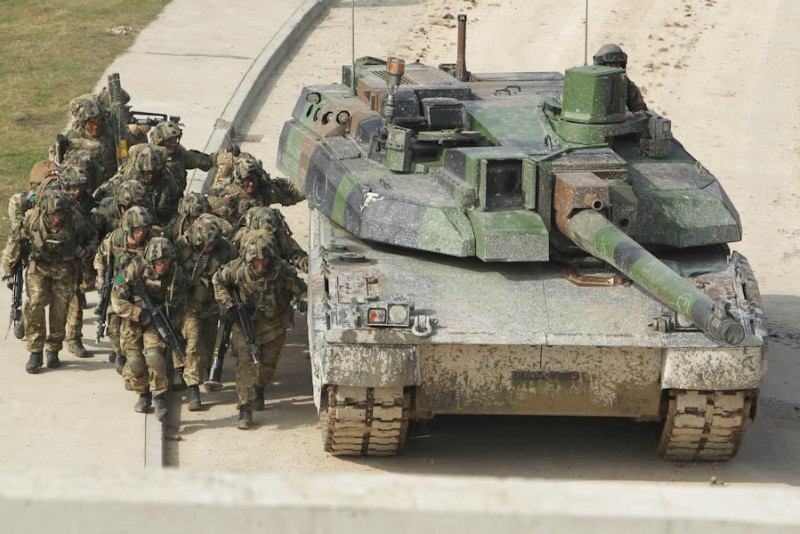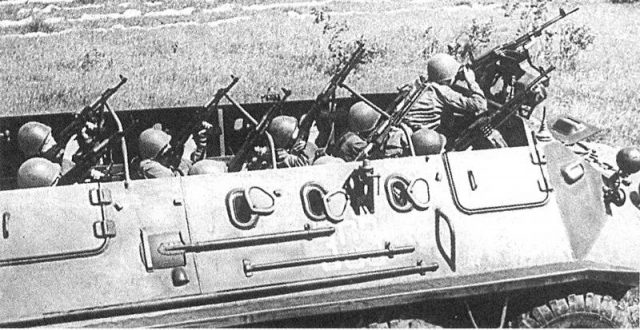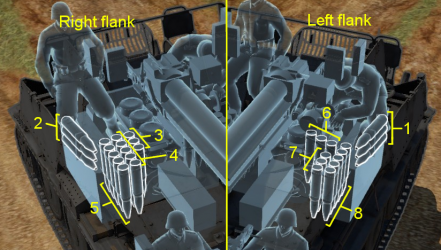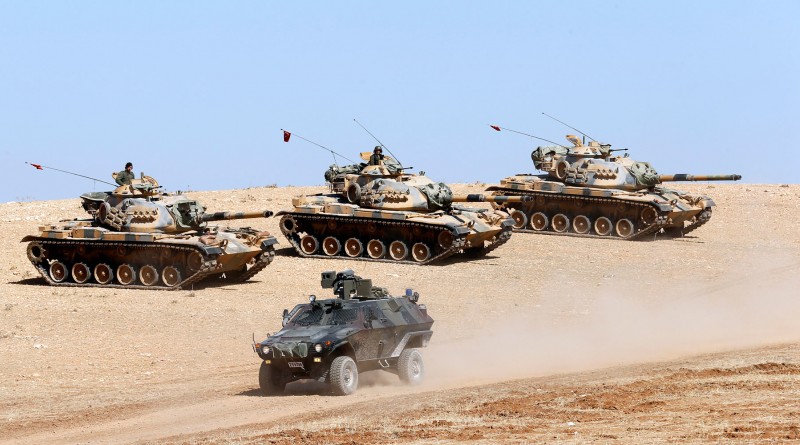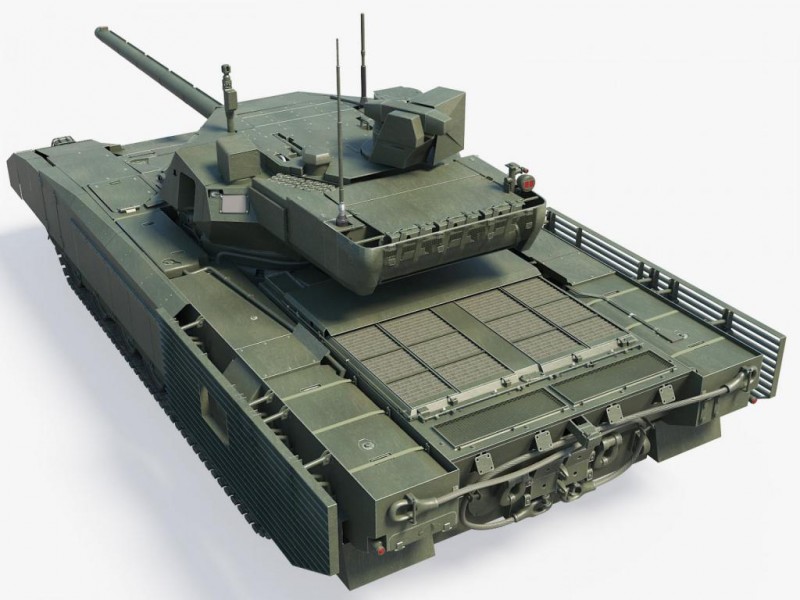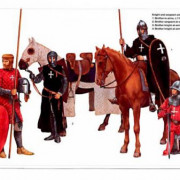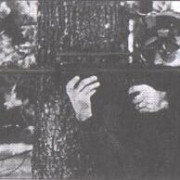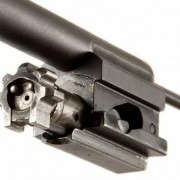M3 bradley
Содержание:
Armaments
Main armament
Main article: M242 (25 mm)
| 25 mm M242 | Turret rotation speed (°/s) | Reloading rate (seconds) | ||||||||||||
|---|---|---|---|---|---|---|---|---|---|---|---|---|---|---|
| Mode | Capacity (Belt) | Fire rate | Vertical | Horizontal | Stabilizer | Stock | Upgraded | Full | Expert | Aced | Stock | Full | Expert | Aced |
| Arcade | 1500 (300) | 201 | -9°/+59° | ±180° | Two-plane | 57.1 | 78.83 | 96 | 106.16 | 112.94 | 0.26 | 0.23 | 0.21 | 0.20 |
| Realistic | 35.70 | 42.13 | 51 | 56.4 | 60 |
Ammunition
- Default: HEI-T · APDS
- M792: HEI-T · HEI-T · HEI-T · APDS
- M791: APDS · APDS · APDS · HEI-T
| Penetration statistics | ||||||
|---|---|---|---|---|---|---|
| Ammunition | Penetration @ 0° Angle of Attack (mm) | |||||
| 10 m | 100 m | 500 m | 1,000 m | 1,500 m | 2,000 m | |
| Default | 81 | 80 | 76 | 70 | 66 | 61 |
| M791 | 81 | 80 | 76 | 70 | 66 | 61 |
| M792 | 81 | 80 | 76 | 70 | 66 | 61 |
Ammo racks

Ammo racks of the M3 Bradley. Racks outlined in red are 25 mm clips
| Fullammo | 1strack empty | 2ndrack empty | 3rdrack empty | 4thrack empty | Visualdiscrepancy |
|---|---|---|---|---|---|
| 5 | 4 (+1) | 3 (+2) | 2 (+3) | 1 (+4) | No |
Additional armament
Main article: BGM-71B TOW
The M3 Bradley comes equipped with a BGM-71B TOW ATGM launcher. The launcher contains two TOW missiles, which can be fired one after another in quick succession. Then, they are reloaded. Before you can fire, though, you have to be either stopped or moving at very low speeds, around 5 km/h. At higher speeds, the launcher folds up against the turret. When you stop, it takes time for the launcher to unfold before you can fire. This is where cruise control can be important. The first cruise control setting for forward and reverse speed is the «battle» setting. This controls the speed of the vehicle to where it is slow enough that you can fire the TOW missiles on the move. As before stated, this speed is very low, only about 10 km/h, so you should probably not drive in this mode of cruise control for the whole battle.
Ammunition
| Penetration statistics | |||||||
|---|---|---|---|---|---|---|---|
| Ammunition | Type ofwarhead | Penetration @ 0° Angle of Attack (mm) | |||||
| 10 m | 100 m | 500 m | 1,000 m | 1,500 m | 2,000 m | ||
| TOW | ATGM | 430 | 430 | 430 | 430 | 430 | 430 |
| Shell details | |||||||||
|---|---|---|---|---|---|---|---|---|---|
| Ammunition | Type ofwarhead | Velocity(m/s) | ProjectileMass (kg) | Fuse delay(m) | Fuse sensitivity(mm) | Explosive Mass(TNT equivalent) (g) | Ricochet | ||
| 0% | 50% | 100% | |||||||
| TOW | ATGM | 299 | 18.8 | N/A | 0.1 | 2,450 | 80° | 82° | 90° |
Ammo racks
Ammo racks of the M3 Bradley. Racks outlined in green are ATGMs.
| Fullammo | 1strack empty | 2ndrack empty | 3rdrack empty | 4thrack empty | 5thrack empty | Visualdiscrepancy |
|---|---|---|---|---|---|---|
| 12 | 10 (+2) | 8 (+4) | 6 (+6) | 4 (+8) | 2 (+10) | Yes |
| 7.62 mm M240 | ||||
|---|---|---|---|---|
| Mount | Capacity(Belt capacity) | Rate of fire(shots/minute) | Verticalguidance | Horizontalguidance |
| Coaxial | 4,400 (200) | 750 | N/A | N/A |
History
Development of the Bradley began in the late 1950s when the U.S. Army began seeking a replacement for the ageing M113 APC. However, despite beginning development relatively early, the successor to the M113 wouldn’t enter service with the Army in the following two decades.
The reason behind this was the constantly changing specifications, requirements and doctrines around which the new vehicle would be designed. The constantly changing requirements, on the other hand, were driven by various technical and political problems arising during development.
Eventually, in 1979, the final design was presented to the Army and production was approved shortly afterwards in 1980. The Bradley, named after WW2 Army General Omar Bradley, was split into two versions, both closely resembling each other, but featuring minor differences and intended for different roles.
While the M2 Bradley was intended as an IFV, capable of transporting and supporting infantry units in combat, the M3 Bradley CFV (Cavalry Fighting Vehicle) is intended to perform scouting and reconnaissance work, ditching its infantry-carrying ability in favour of improved communications systems and increased ammunition capacity.
The Bradley entered service with the U.S. Army in 1981 and saw extensive combat use during the Gulf War as well as subsequent conflicts. Despite several (unsuccessful) efforts being made to replace the Bradley with a newer design, the vehicle still remains in active service with U.S. armed forces today, with over 6,500 units produced.
— From Devblog
Variants
M3(A0)
This model is essentially a re-stowed M2 Bradley. The passenger compartment was occupied by two observers and more ammunition and missiles. Because it did not carry a squad, the firing ports were covered. The M3 retained the three periscopes between the cargo hatch and entry ramp and the periscopes along the left side of the vehicle, while those on the right side were covered over as they would have been inaccessible due to the TOW missile stowage rack.
M3A1
The M3A1 variant introduced a gas particulate filter system for NBC threats. Unlike the , the NBC masks connected to the central filter for all five crewmen, instead of just the driver, gunner, and vehicle commander. This variant also introduced a fire suppression system. The three periscopes on the rear deck were omitted on the M3A1, and replaced by four periscopes in the cargo hatch itself.
M3A2
The M3A2 incorporated enhanced armor upgrades, such as the ability to mount explosive reactive armor, from the M2A2 Bradley. After live fire testing, seating and ammunition stowage arrangements were also changed, with the observers moved to a bench on the left side of the vehicle and the missile stowage rearranged to enhance safety. After the Gulf War, other improvements including an eye-safe carbon dioxide laser rangefinder, global positioning system and compass, missile countermeasure device, combat identification system, and thermal viewer for the driver were incorporated into the M3A2-ODS.
M3A3
The M3A3 model of the Bradley uses enhanced information and communication equipment, a central processing unit, and information displays for the vehicle commander and squad leader. The M3A3 is compatible with the inter-vehicular communication system of the M1A2 Abrams tank and AH-64D Apache Longbow helicopter. The commander has an independent thermal viewer and a new integrated sight unit called the Improved Bradley Acquisition System (IBAS), which allows automatic gun adjustments, automatic boresighting, and tracking of dual targets. The roof is reinforced with titanium armor. Many M3A3s were converted from M3A2s.
Fire control and observation
The gunner is equipped with a Raytheon integrated sight unit (ISU) which includes a day / thermal sight of magnification ×4 and ×12. An optical relay provides the image of the gunner’s sight to the commander.
The gunner also has periscopes for forward and side observation. A daytime sight system for the gunner or commander is provided as backup to the primary sight.
The driver is equipped with three forward periscopes plus one periscope to the left. The central periscope can be replaced with the Northrop Grumman (formerly Litton) AN/VVS-2 driver’s night viewer with a 25mm second-generation image intensifier. Upgraded M2 Bradleys are equipped with the DRS Technologies driver’s vision enhancer (DVE).
Bradley M2/M3 self-protection
The Bradley is equipped with two M257 smoke grenade dischargers, each loaded with four smoke grenades. It is also fitted with an engine smoke-generating system.
The hull of the M2 Bradley is constructed of welded aluminium and spaced laminate armour. In addition, the M2A2 / M3A2 Bradleys have appliqué steel armour with provision for additional passive armour or explosive reactive armour (ERA).
General Dynamics Armament and Technical Products has developed an enhanced-capability reactive armour package for the Bradley. 150 sets have been delivered and a follow-on contract for 168 sets was placed in July 2005.
Rafael Armament Development Authority, Ordnance Systems, of Haifa, Israel, is sharing 50% of the production.
The ERA consists of 96 tiles fixed to the sides, turret and front of the vehicle, which enhance protection against a variety of anti-armour munitions including shoulder-launched rocket propelled grenades (RPG).
In September 2008, BAE Systems was awarded a contract to install improvised explosive device (IED) mine armour on 433 Bradley M2/M3 vehicles. Under a $62m contracts placed in April 2011, the vehicle will be fitted with energy absorbing seats, laser designation and other survivability systems.
References
- ^
- Diane L. Urbina. «Lethal beyond all expectations: The Bradley Fighting Vehicle»—in chapter 12 of George F. Hofmann and Donn A. Starry (editors) Camp Colt to Desert Storm: The History of U.S. Armored Forces, Lexington, Kentucky; The University Press of Kentucky, ISBN 0-8131-2130-2.
- James G. Burton, Col. The Pentagon Wars: Reformers Challenge the Old Guard, Annapolis, Maryland: Naval Institute Press (1993). ISBN 1-55750-081-9.
- ^ Haworth, W. Blair (1999). The Bradley and How It Got That Way: Technology, Institutions, and the Problem of Mechanized Infantry in the United States Army. Westport, Conn.: Greenwood Press. ISBN 0-313-30974-4.
- . Global Security
- Quotation from General accounting office’s report about the Bradleys and Abrams performance in the Persian Gulf War: «According to information provided by the Army’s Office of the Deputy Chief of Staff for Operations and Plans, 20 Bradleys were destroyed during the Persian Gulf war. Another 12 Bradleys were damaged, but four of these were quickly repaired. Friendly fire accounted for 17 of the destroyed Bradleys and three of the damaged ones.»
- ^
- also stands for nuclear, biological, chemical
- ^ Field Manual 3-22.1, Bradley Gunnery (Nov 2003). Headquarters, Department of the Army.
- ^ Hans Halberstadt (2001). Europa Militaria No 30: Bradley Company. Ramsbury, Marlborough, Wiltshire: The Crowood Press Ltd. ISBN 1-86126-425-9.
- ^ Michael Green & James D. Brown (2007). M2/M3 Bradley at War. St. Paul, MN: Zenith Press. ISBN 978-0-7603-2523-0.
DescriptionEdit
The M2A2 Bradley is one of the US army’s best combat vehicle, capable of engaging light tanks in battle, and win one-on-one. The Bradley can hold up to six fully armed soldiers and rapidly deploy them into the battlefield, due to its high speed. Though the Bradley’s main purpose is to support infantry, it is adept at dealing with other situations.
The Bradley is armed with a M242 25mm chaingun that can hold up to 300 rounds, which is very effective against infantry and non/lightly armored vehicles. Its secondary armament is a TOW missile launcher, which is more effective against tanks than the chaingun. It is protected with armor that can withstand small arms and RPGs, but cannot take a shot from a tank gun. Smoke grenades help hide the Bradley from its fatal enemies: tanks, helicopters, Anti-Tank squads and its counterpart, the BMP-2.
GameplayEdit
Several M2s firing their 25mm chain gun
The Bradley is also very effective in the game as in real-life. Its chaingun quickly decimate infantry squads and rip light vehicles apart. Its TOW missiles also do the same against medium tanks.
As an APC, its main job is to transport and support infantry, though as mentioned, it also does well against the enemy on its own and can also target enemy helicopters with high accuracy at short ranges. The Bradley can also prove to be a valuable asset in urban combat thanks to its ability to transport infantry rapidly, and also due to its ability to target and kill infantry and vehicles, as well as choppers and tanks.
OffensiveEdit
Fires a Tube-launched, Optically-tracked, Wire-guided missile at armored targets. The missile is very effective when targeted at the rear of tanks or vehicles because armor is weakest here. The TOW missile has a tendency to miss targets that activate their smoke grenades.
БМП-3: особый сплав при качественном вооружении
Теперь посмотрим на российскую БМП-3, с которой немецкой «Пуме», вероятней всего, придется столкнуться на поле боя.
Когда конструкторы только разрабатывали эту машину, они планировали установить на нее 30-мм пушку. В принципе, такого калибра достаточно, чтобы с успехом накрывать большинство целей. Даже в противоборстве с танком вооруженная 30-мм пушкой БМП могла если не победить, то и не проиграть: удачный залп сносил навесное оборудование с бронированного монстра, лишая его экипаж возможности маневра и прицельной стрельбы. Однако военные потребовали от разработчиков увеличить огневую мощь машины. В результате на одном из вариантов БМП-3 под названием «Витязь» установлено 100-мм орудие — пусковая установка 2А70, которая применяется и для стрельбы осколочно-фугасными снарядами, и как направляющая для бронебойных активно-реактивных снарядов. Она спарена с 30-мм автоматической пушкой 2А72 и 7,62-мм пулеметом ПКТМ. В корпусе машины находятся еще два пулемета.
В общем, даже при беглом взгляде мы замечаем, что БМП-3 вооружена лучше, нежели БМП «Пума». К примеру, немцы, — об этом говорилось выше, — ставят на «Пумах» 30-мм пушки, считающиеся на БМП-3 вспомогательным оружием. Примерно такая же ситуация складывается и с системами прицеливания и управления. И если мы представим себе огневую дуэль между двумя этими машинами пехоты, то придем к выводу, что БМП-3 имеет большой шанс на победу.
Следует отметить особенность бронирования нашей «бэмпешки». Здесь используется особый сплав стали с алюминием. На этапе НИОКР военные просили установить на новую машину танковую броню. Инженеры отвечали, что тогда БМП-3 лишится плавучести. В результате было решено использовать новый сплав, обеспечивающий требуемый уровень защиты, но не обременяющий машину лишним весом. Минусом такого решения является то, что корпус из такого сплава сложно ремонтировать в боевых условиях.
Конструкторы особо подчеркивают, что потенциал этой машины не израсходован полностью. Она способна выполнять широкий круг задач, а не только доставлять и поддерживать пехоту на поле боя. Несмотря на то, что с момента создания оригинальной конструкции прошло более 25 лет, БМП-3 по-прежнему рассматривается военными экспертами как одна из лучших в своем классе.
Фото БМП M2 Брэдли


Подбитый из РПГ В Ираке БМП М2 «Брэдли»

Горящий БМП М2 «Брэдли»
Похожее
БМП К-17 Бумеранг ТТХ. Видео. Фото. Скорость. Броня
БРДМ-2 ТТХ, Видео, Фото, Скорость, Броня
БМП-2 ТТХ, Видео, Фото, Скорость, Броня
БТР-80 ТТХ, Видео, Фото, Скорость, Броня
БМП-1 ТТХ, Видео, Фото, Скорость, Броня
БМД-1 Двигатель. Вес. Размеры. Вооружение
Бронеавтомобиль Тигр ТТХ, Видео, Фото, Скорость, Броня
БМПТ «Терминатор» ТТХ, Видео, Фото, Скорость, Броня
БМП-3 ТТХ, Видео, Фото, Скорость, Броня
БМД-2 Двигатель. Вес. Размеры. Вооружение
Бронеавтомобиль КАМАЗ-63968 Тайфун-К ТТХ, Видео, Фото
БТР-82А ТТХ, Видео, Фото, Скорость, Броня
БТР-4 «Буцефал» ТТХ, Видео, Фото, Скорость, Броня
БМД-4М «Бахча-У» ТТХ, Видео, Фото, Скорость, Броня
БТР-40 ТТХ, Видео, Фото, Скорость, Броня
БТР-60 ТТХ, Видео, Фото, Скорость, Броня
БМП Б-11 Курганец-25 ТТХ, Видео, Фото, Скорость, Броня
Тягач МТ-ЛБ ТТХ, Видео, Фото, Скорость, Броня
БТР-152 ТТХ, Видео, Фото, Скорость, Броня
БТР-90 Росток, Бережок, Бахча-У ТТХ, Видео, Фото
БРДМ-1 ТТХ, Видео, Фото, Скорость, Броня
БМП Т-15 Армата ТТХ. Видео. Фото. Скорость. Броня
Бронеавтомобиль Урал-63095 Тайфун-У ТТХ, Видео, Фото
БТР-50 ТТХ. Видео. Фото. Скорость. Броня
КамАЗ-43269 Выстрел (БПМ-97) ТТХ, Видео, Фото, Скорость, Броня
Бронетранспортер БТР-Д ТТХ, Видео, Фото, Скорость, Броня
ПРП-3 «Вал» и ПРП-4 «Нард» подвижные разведывательные пункты
Бронеавтомобиль ВПК-3927 Волк. Броня. Двигатель. Вес. Размеры
Бронеавтомобиль T-98 Комбат ТТХ, Видео, Фото, Скорость
БМД-3 ТТХ, Видео, Фото, Скорость, Броня
БРДМ-3 — бронированная разведывательно-дозорная машина
Плавающий транспортер ПТС-4 ТТХ. Видео. Фото. Скорость. Броня
Украинский БТР-3 ТТХ, Видео, Фото, Скорость, Броня
15Ц56М «Тайфун-М» противодиверсионная машина
БРМ-3К «Рысь» ТТХ, Видео, Фото, Скорость, Броня
БМП М2 «Брэдли» ТТХ, Видео, Фото, Скорость, Броня
БТР-МД «Ракушка» ТТХ, Видео, Фото, Скорость, Броня
Бронеавтомобиль БА-64 ТТХ, Видео, Фото, Скорость, Броня
Бронеавтомобиль БА-10 ТТХ, Фото, Скорость, Броня
Р-149БМР «Кушетка-Б» — командно-штабная машина
Бронетранспортер БТР-Т ТТХ, Видео, Фото, Скорость, Броня
БТР Б-10 Курганец-25 ТТХ. Видео. Фото. Скорость. Броня
Бронеавтомобиль Дозор-Б ТТХ, Видео, Фото, Скорость, Броня
БМО-Т — тяжелая машина огнеметчиков
Тягач ВТ-55А ТТХ, Фото, Скорость, Броня
УРАЛ-532362 «Лавина-Ураган» — водометный спецавтомобиль
Бронеавтомобиль БА-20 ТТХ, Фото, Скорость, Броня
Бронеавтомобиль БА-11 ТТХ, Фото, Скорость, Броня
РХМ-7 «Берлога» машина радиационной и химической разведки войск РХБЗ
БРЭМ-К — бронированная ремонтно-эвакуационная машина
БРЭМ-Л «Беглянка» ремонтно-эвакуационная машина
Танковый мостоукладчик МТУ-90М ТТХ, Видео, Фото, Скорость
БММ-Д «Травматизм» бронированная медицинская машина ВДВ
СПМ — специальная гусеничная пожарная машина
БММ-80 «Симфония» бронированная медицинская машина
АЗМ — аэротранспортабельная землеройная машина
УР-07М «Пересортировка» установка разминирования
БТР Намер ТТХ, Видео, Фото, Скорость, Броня
БРЭМ-80У — ремонтно-эвакуационная машина
КДХР-1Н «Даль» — комплекс дистанционной химической разведки
РМ-Г «Десна» — ремонтная гусеничная машина
«Мгебров-Рено» — бронеавтомобиль царской армии
Бронеавтомобиль БА-30 ТТХ, Фото, Скорость, Броня
Бронеавтомобиль ПБ-4 ТТХ, Фото, Скорость, Броня
You have no rights to post comments
Propulsion
The Bradley is equipped with a VTA-903T engine from Cummins Engine Co of Colombus, Indiana. The hydromechanical transmission HMPT-500 from Combat Propulsion Systems, a Division of L-3 Communications, provides three-speed ranges. The engines provide a maximum speed of 66km/h.
All Bradleys are amphibious. Earlier models are equipped with a water barrier, which is fitted by the crew before entering the water. A3 models have an inflatable pontoon which fits on the front and sides of the vehicle. Water propulsion is provided by tracks and the Bradley can attain a maximum speed of 7.2km/h in water.
Bradley M2A3 / M3A3 upgrade programme
The US Army A3 Bradley upgrade programme includes improvements based on operational experience in the Gulf War. The first low-rate initial production M2A3 / M3A3 Bradley was delivered in November 1998 and entered service in April 2000. The system was approved for full-rate production in May 2001.
The upgrade of 120 vehicles (80 M2A3, 29 M3A3 and 11 A3 BFIST fire support) was ordered in February 2005, and in June 2005, a contract for the upgrade of an additional 450 vehicles to A3 standard was placed.
Over 3,390 vehicles had been upgraded by October 2010.
In October 2010, BAE Systems was awarded a $91m contract to replace the old and damaged systems of the 552 Bradley vehicles of the US Army.
The US Army placed a $250m contract in November 2010 to procure long-lead items for 247 Bradley Operation Desert Storm Situational Awareness (ODS-SA) vehicle conversion kits.
A total of 202 kits have been used for the conversion of Bradley ODS vehicles to the Bradley ODS-SA configuration and remaining will be retained for future vehicle conversions. A further $270m contract was awarded for the conversion of 245 ODS-SA vehicles in October 2011.
BAE Systems received a $47m contract to update 95 Bradley vehicles with new equipment and technology in February 2011.
In August 2006, a follow on contract was awarded for 96 vehicles (57 M2A3, 16 A3 BFIST and 22 A2 ODS BFIST) and, in November 2006, for 610 vehicles (490 A3 and 120 A2ODS). In July 2007, a further 172 vehicles (108 A2, 60 A3, four BFIST) were contracted. The US Army’s requirement is for 2,545 upgraded Bradley A3 vehicles.
The upgrade includes the improved Bradley acquisition system (IBAS) for the TOW missile from DRS Technologies and commander’s independent thermal viewer (CITV), from Raytheon which use second-generation thermal imagers derived from the US Army’s horizontal technology initiative (HTI). The imagers are based on a 480×4 scanning infrared focal plane array.
The IBAS also has day TV and direct view optics, automatic dual target tracking, eyesafe laser rangefinder and a two-axis stabilised head mirror. The thermal imaging DRS Technologies driver’s vision enhancer (DVE), ANVAS-5, uses a 320×240 uncooled ferroelectric scanning array.
A combat identification system is being installed. The electronics system includes a databus with central processors and digital information displays for commander, driver and squad leader.
History
The M3 Bradley CFV is very similar to the M2 Bradley IFV (Infantry Fighting Vehicle) and is fielded with the same two-man 25mm Bushmaster Cannon turret with a coaxial M240C 7.62mm machine gun. It only varies from the M2 in a few subtle ways and by role. The M3 is classified as an armored reconnaissance and scout vehicle and does away with the firing ports found in the M2 series. The M3 also carries more TOW missiles as well as more ammunition for its 25mm and 7.62mm guns.
The Bradley family as a whole was originally intended to support the M113 Armored Personnel Carrier (APC), but ended up replacing it in U.S. Army service altogether. Today, the Bradley is fielded in conjunction with the M1 Abrams series of main battle tanks and often accompanies infantry squads into combat. In the 1991 Persian Gulf War, Bradleys destroyed more enemy tanks than the M1 Abrams.[citation needed] Only three Bradleys were lost to enemy fire, however, at least 17 were lost to friendly fire. Improvements to the Bradley family have included enhanced identification features, as well as anti-tank missile countermeasures (for first generation wire-guided missiles only) and improved armor protection in the form of ERA.
Replacement
The United States and United Kingdom worked jointly on the Future Scout Cavalry System in the 1990s. The U.S. Army’s intended replacement for the M3 Bradley and up-armored Humvee reached the engineering and manufacturing development phase. It reached the engineering and manufacturing development phase before both partners terminated involvement in October 2001 to pursue other more urgent programs: the U.S. Interim Armored Vehicle and UK Future Rapid Effect System.
From 2003 Future Combat Systems (FCS) planned a successor to the M3 Bradley in the . That too was canceled when FCS was terminated in 2009.
The U.S. Army intended the Ground Combat Vehicle replace the M2 Bradley and M113 by 2018, while the M3 Bradley could later be replaced by future variants of the GCV. The GCV project was cancelled in 2014.
